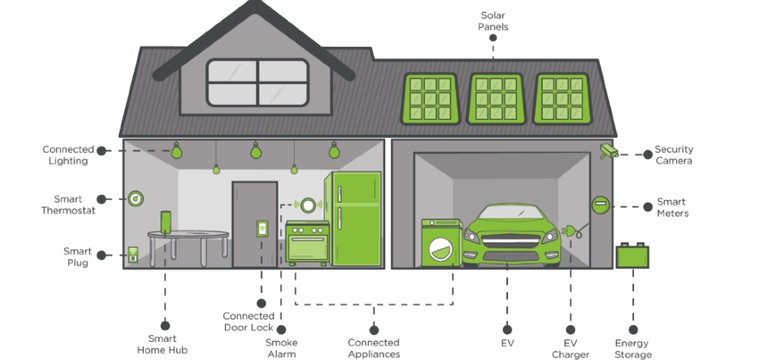
The internet of things (IoT) is a term that represents a spectrum of technologies associated with connectivity, including connected devices, software and cloud computing capabilities. It creates a technology framework fundamental to supporting communications and interoperability.
Connected sensors collect data that is transmitted, aggregated and analyzed to detect patterns and deliver insights to enable more efficient operations. IoT embodies a world of opportunity for stakeholders that can capitalize on connectivity. There are more connected devices and more data than ever before — the industry is only beginning to scratch the surface of the opportunity associated with the data.
Companies are beginning to employ artificial intelligence (AI) techniques to create new IoT uses cases and services. IoT is already present across a variety of industries and continues to gain momentum as customers demand data-driven solutions and new use cases emerge.
With the development of connected ecosystems and the maturation of communicating technologies, the home is becoming a stepping stone toward creating a smarter world. Consumers are increasingly aware of the benefits of IoT. Devices like the Amazon Echo and Google Home demonstrate the value of being able to control and monitor smart devices in the home. These technologies are fundamentally changing the way we interact with our homes, and residential IoT is poised to see global revenue levels of $49.1 billion in 2018, growing to $167.2 billion in 2027.
Though this digital journey is gaining traction in the home, it is also quickly expanding beyond the front door. Once a connected infrastructure is established within a home, IoT applications can bridge to neighborhoods.
As an example, Vivint Smart Home has begun this journey with its Streetyapp. This app turns smart homes into smart communities by allowing Vivint customers with an outdoor camera to share footage with neighbors. While the idea demonstrates an important trend around the expansion of IoT, there are limitations to this technology. It has a 300-yard sharing limit, users have to own a Vivint outdoor camera and it is difficult to reach a high enough penetration of Vivint Smart Home ecosystems for this to be an effective app for customers.
Once homes and living communities are more connected, they can plug in to larger smart city programs. The insights gathered from IoT frameworks can enable broader applications:
Connectivity is not limited to making our lives at home more convenient and efficient — it is also about each piece of the puzzle contributing to the bigger picture of living in a digital society. Energy Cloud 4.0 discusses how IoT is having an effect on the energy industry. Policy, market demand and technology are shifting the energy industry. Centralized, one-way power flows through traditional transmission and distribution infrastructure are giving way to a highly networked ecosystem of two-way power flows through a digitally enabled and intelligent grid architecture. This transition is enabled through the data, monitoring, and control capabilities provided by IoT networks established throughout smart grids, smart cities, and smart homes.
Despite all the promise that exists around our smart, optimized, digital future, it is important to stay realistic. We are still in the early stages of IoT deployments, and many challenges must be overcome. For example, IoT is still riddled with basic issues, such as the lack of interoperability between connected devices. IoT devices that cannot communicate with each other and create a challenging user experiences still inhibit adoption as well as generate disparate and inaccessible data streams that stand in the way of technology vendors delivering on promises of optimization.
Many of the advanced applications that can be enabled with IoT also involve knowing a lot about consumers’ lifestyles, which can be a hard sell for increasingly privacy-minded people. Other major barriers exist, such as premium prices for smart devices, struggles with monetizing IoT, and meeting consumer expectations with these smart technologies.
While we still have a long way to go, IoT technologies are quickly becoming a part of the way we live. For example, Samsung has committed to connecting all devices and appliances to the IoT cloud and equipping them with Bixby AI technology by 2020. Google and Amazon are investing significantly in improving a digital assistant’s ability to remember and recall information, track context, and have a natural conversation with users. We are just beginning the journey toward living in smarter homes, communities, cities, and a smarter world enabled by IoT.
Avots: smartcitiesdive